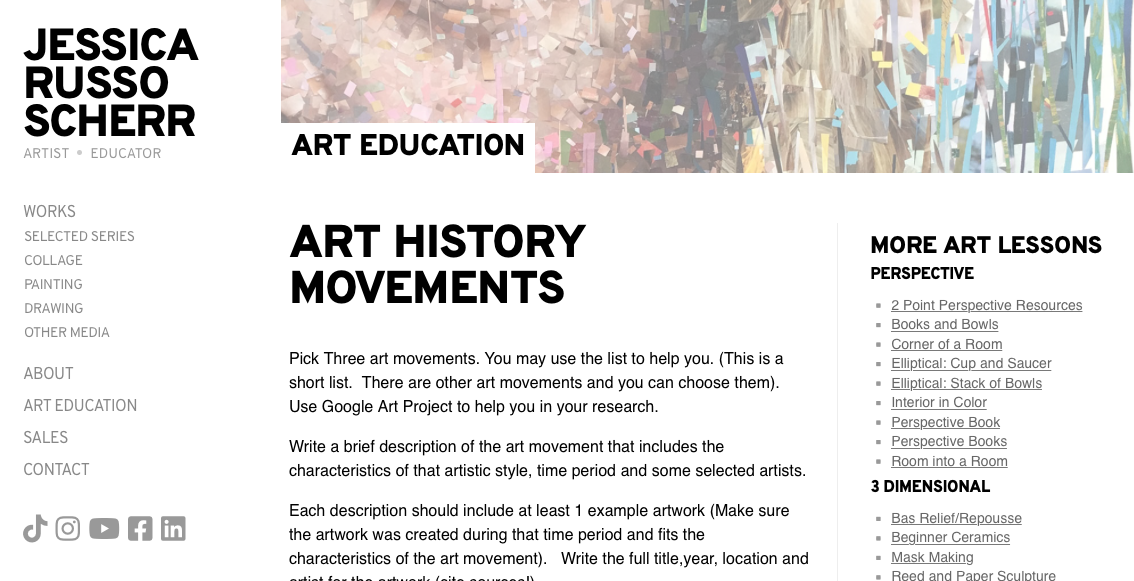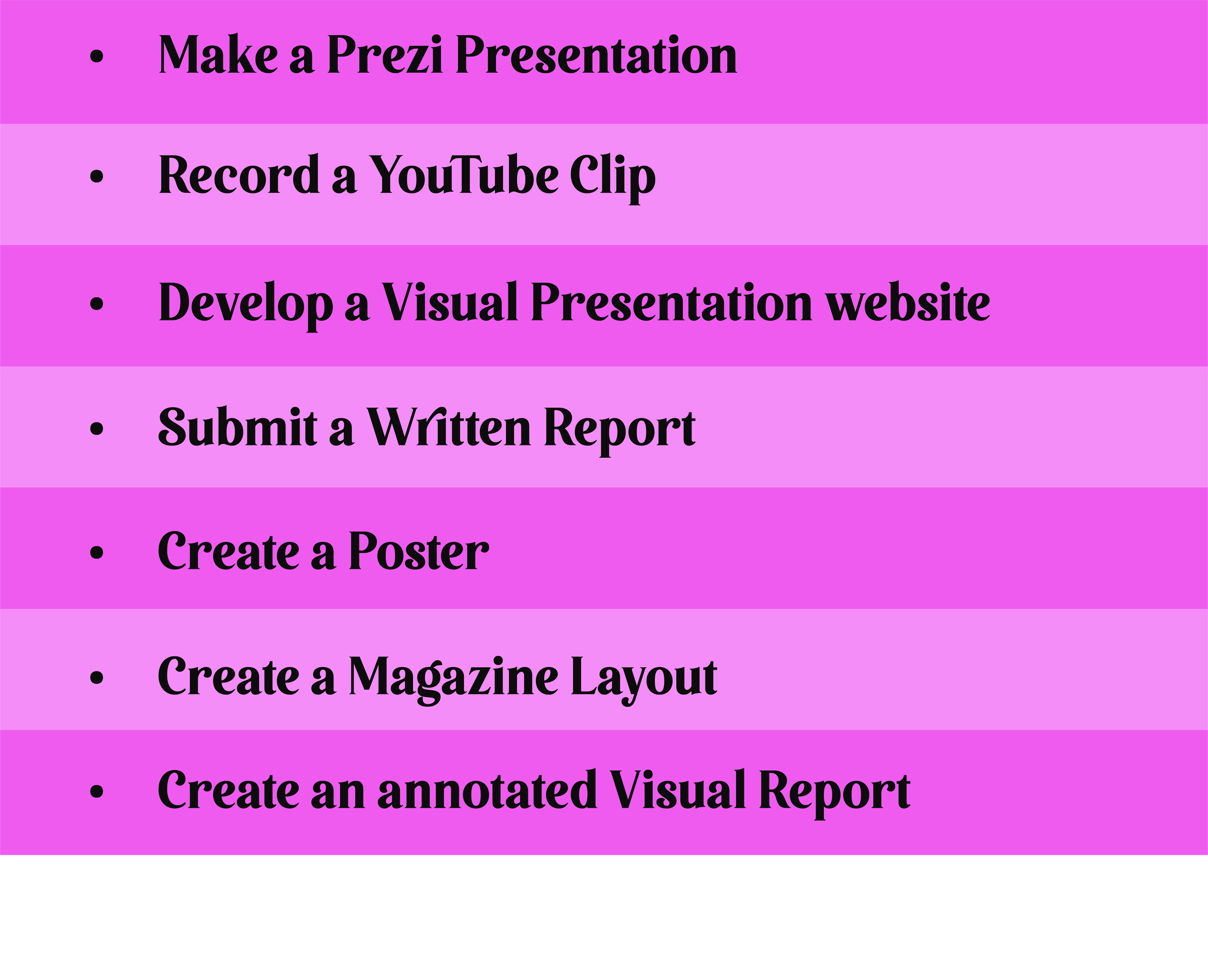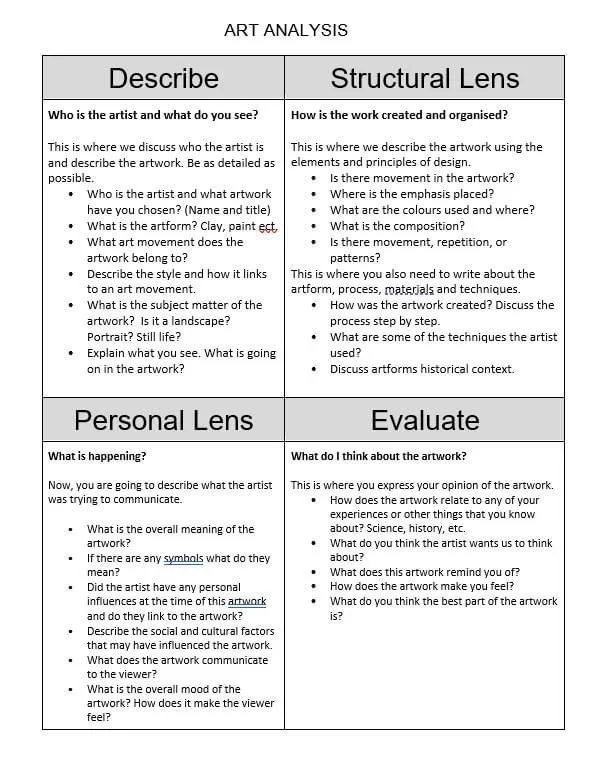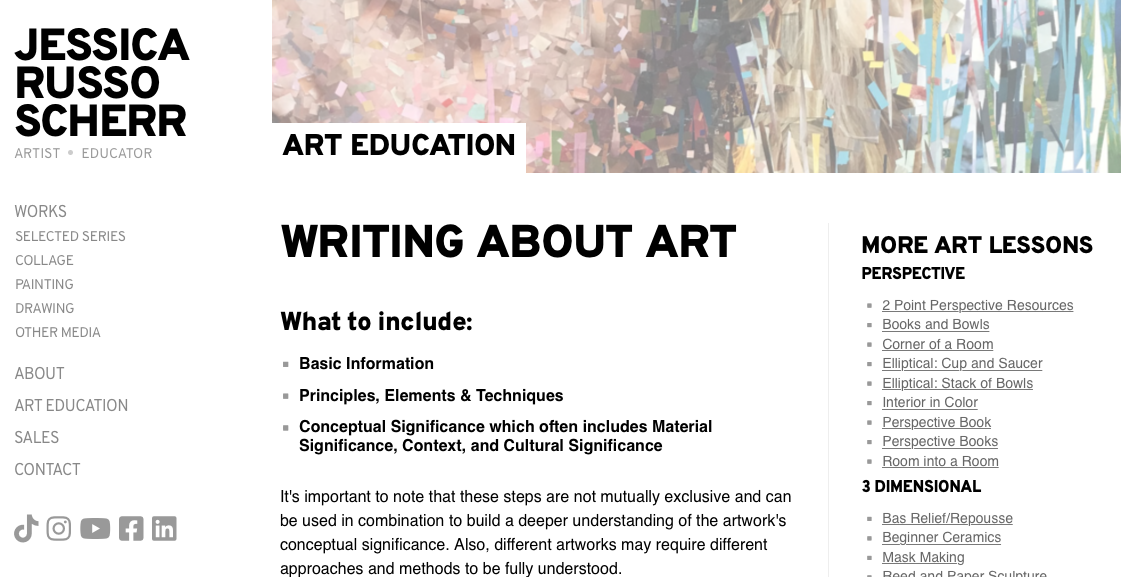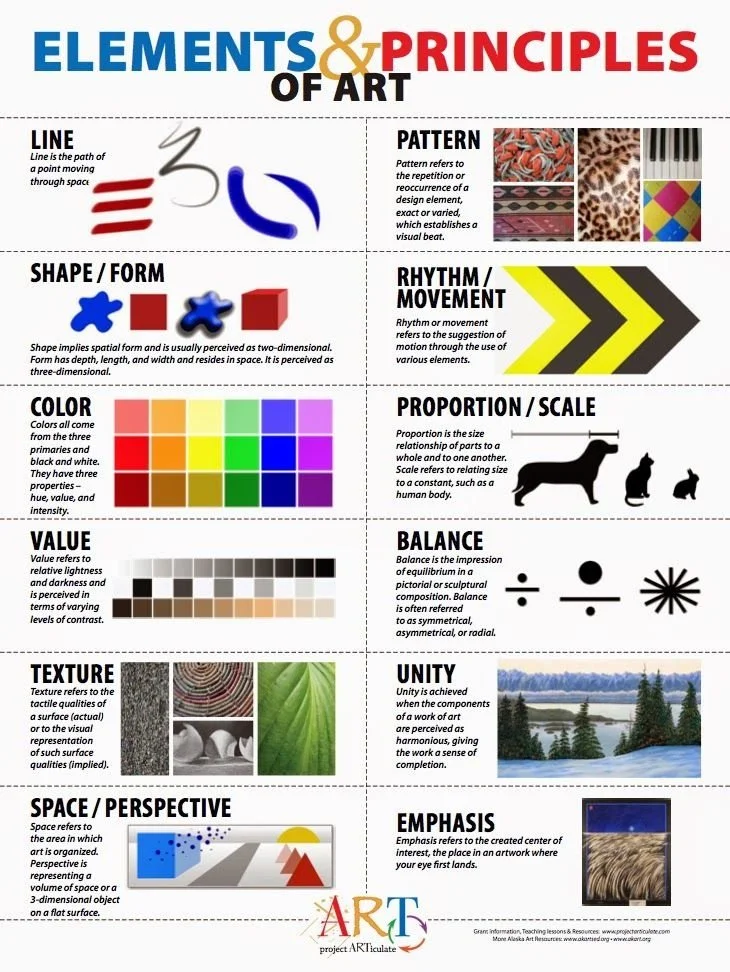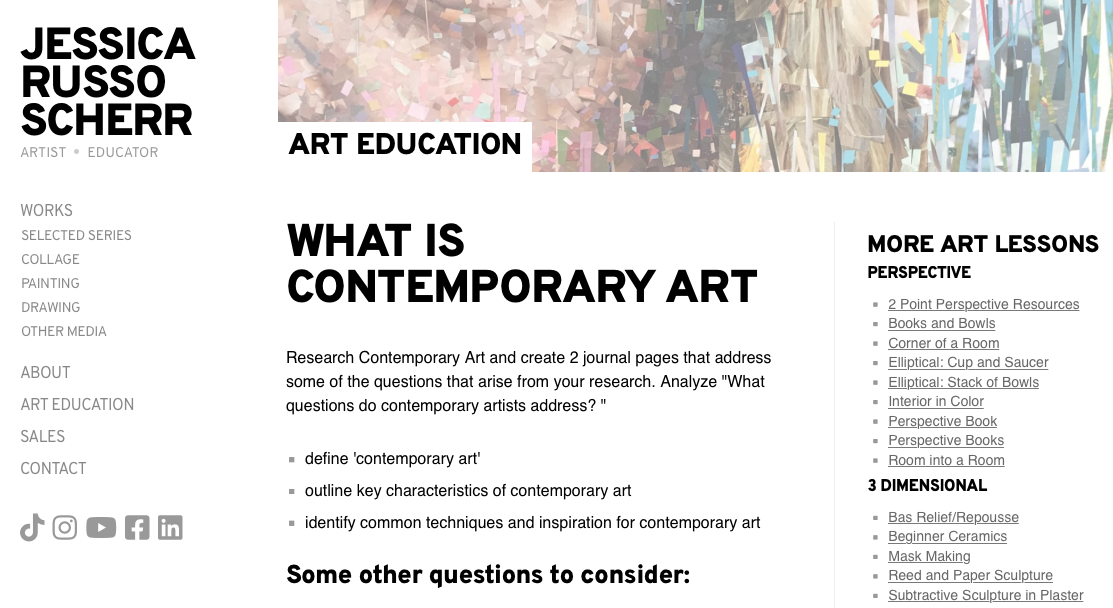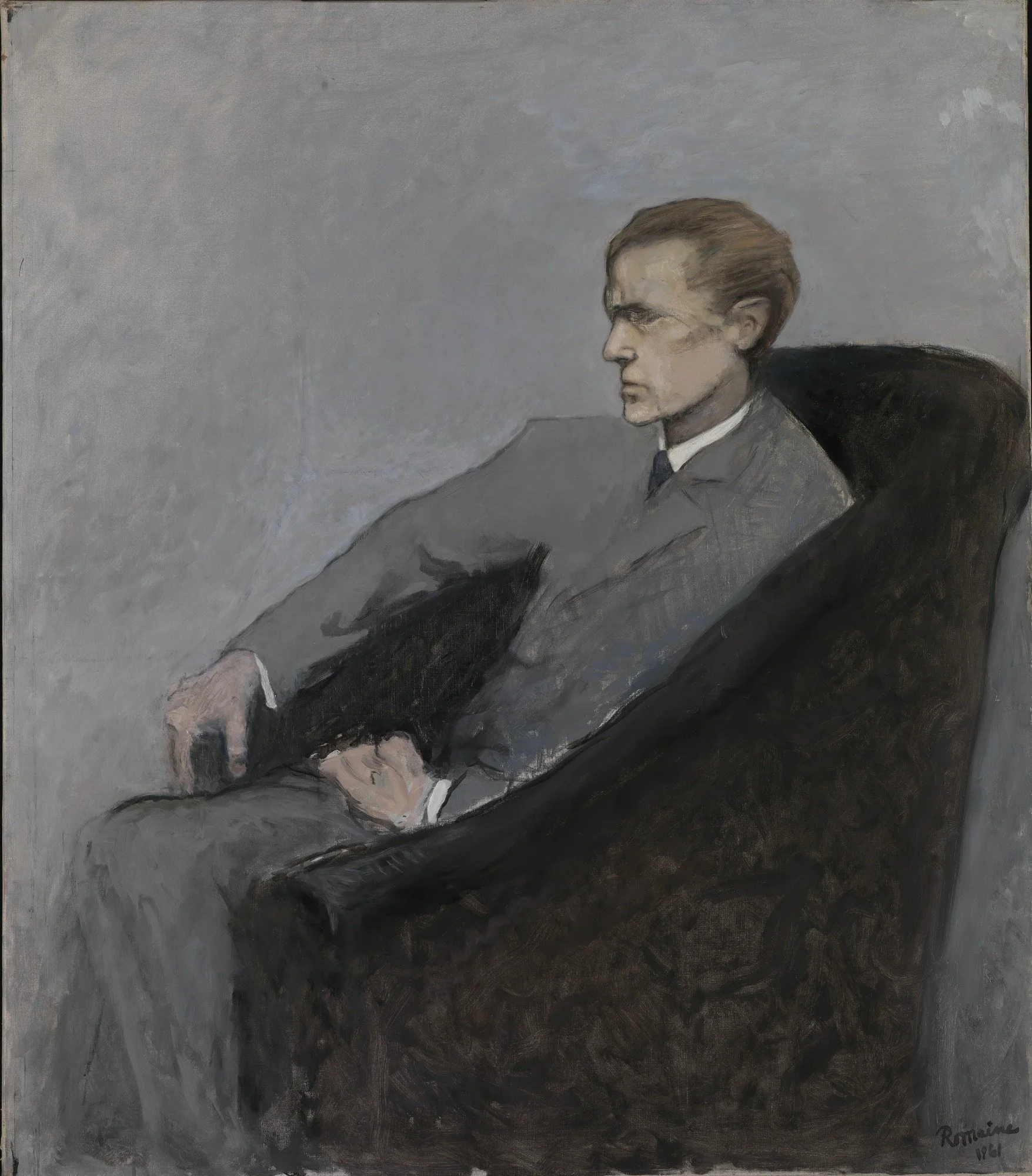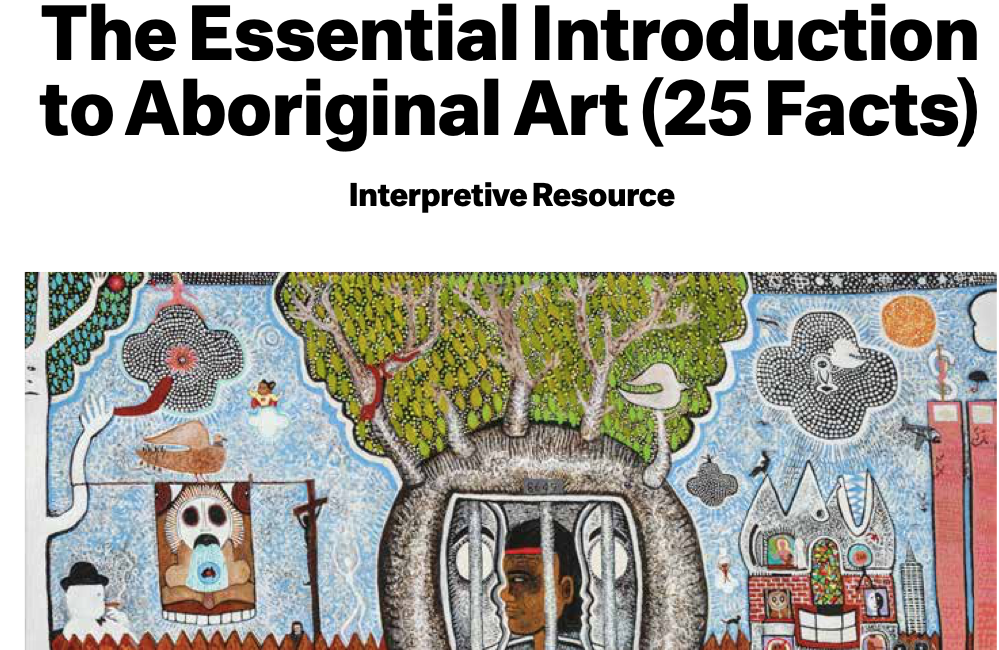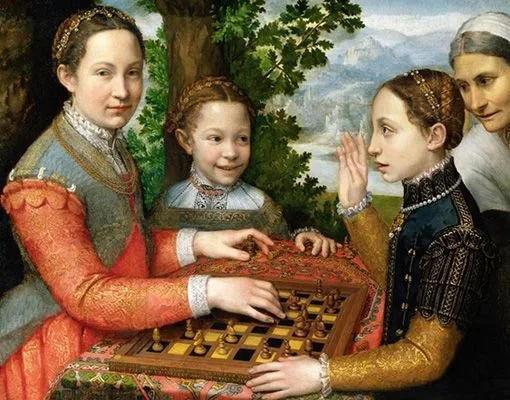
A:CP U1 AOS/Outcome 1
(Af Klint, 1908)
Artists, artworks and audiences
Area of Study Overview:
In this area of study you will be introduced to the Structural and the Personal Lenses through researching and analysing three artists, their practices and their artworks.
You will analyse one artwork by each artist and interpret meanings and messages using the Structural and Personal Lenses.
You will aim to discover how the Structural and Personal Lenses can enhance ones understanding of artworks and the way they reflect the artist’s interests, experiences and thinking.
You will also work towards developing an understanding of how the interpretation of meanings and messages is influenced by the personal experiences of the viewer or audience and the context of the artwork.
You will learn how to use evidence from artworks and a range of sources to support their personal interpretation and point of view.
Task Specifications:
You will study the practices of at least three artists to examine historical and contemporary artworks and practices. The artists may be selected from a range of societies and cultures, including artworks by Aboriginal and Torres Strait Islander peoples.
In Area of Study 1, the three artists selected for study must be from different periods of time and cultures and include at least one contemporary artist and at least one Australian artist.
Historical Artist = Pre-2000s
Contemporary Artist = post 2000s
Option 1: ‘Inner Dialogue’
(HITS - 1. Setting Goals, 2. Structuring Lessons, 6. Multiple exposures, 7. Questioning, 9. Metacognitive strategies. 10. Potential for Differentiation
Key Knowledge:
the practices of artists from different periods of time and cultures
the use of the Structural Lens and the Personal Lens to analyse and interpret artworks
the use of personal opinions and points of view about artworks
the ways artists use visual language to communicate ideas and meaning in their artworks
terminology used in discussion of artists and their artworks
You are required to:
analyse and discuss the practices of artists from different periods of time and cultures
apply relevant aspects of the Structural Lens and the Personal Lens to analyse and interpret artworks
formulate and justify personal opinions with reference to artworks and related sources
analyse and discuss how artists use visual language to communicate ideas and meaning in their artworks
use appropriate art terminology and references to a range of sources in the discussion of artists and their artworks
The task
‘Discuss the practices of three artists, and apply the Structural Lens and the Personal Lens to analyse and interpret one artwork by each artist’.
Self-portraiture has been described as an artist’s ‘inner dialogue’. Like writing or speech, creating art can be used as a language of self-expression, conveying our thoughts, feelings, and values while generating relationships between the art elements and principles we use to communicate meanings and messages. Discuss this concept by analysing and interpreting the portraiture work of 3 of the following artists:
Rembrandt van Rijn
Romaine Brooks
Cindy Sherman
Francis Bacon
Del Kathryn Barton
Tracey Moffatt
Vincent Namatjira
The response should use the Structural and Personal Lenses and draw on at least three art sources per artist.
Option 2: ‘Country and Culture’
The relationship between Country and Indigenous culture remains a fundamental component of the identity and way of life of Aboriginal and Torres Strait Islander people. To Indigenous communities, Country or land is not owned or used, “but rather a place of belonging as well as way of connecting to one’s Culture, Spirit, [and] People” (Victorian Aboriginal Heritage Council, 2024). Acknowledging Country is a way for us all to demonstrate respect for the traditional owners of the land we occupy, although alternatively, it is a way for us to acknowledge how colonisation, discrimination, and persecution have impacted the ‘health’ of Country and affected Indigenous cultures and lifeways (Evolve Communities, 2024).
Using the Structural and Personal Lenses, examine this concept by analysing and interpreting one work and its connection to Country and Indigenous cultures by 3 of the following artists:
Marlene Gilson
Badger Bates
Vincent Namatjira
Rusty Peters
Alison Munti Riley
Daniel Boyd
George Tjungurrayi
Ricky Maynard
Option 3: ‘History, Contemporary and Collaboration’
Using the Structural and Personal Lenses, analyse and interpret one work from a historical period (HIS), a Contemporary period (CON), and a collaborative work (COLL) from 3 different artists and compare their practices, meanings and messages. You must include 1 Australian artist (FNA). Artists to choose from:
Hilma af Klint HIST, COLL
Edward Burra HIST
Marlene Gilson FNA, CON
Badger Bates CON, FNA
Grayson Perry CON
Laith McGregor CON
Raffaello Sanzio da Urbino (Raphael) HIST, COLL
Tracey Moffatt CON, COLL
Vik Muniz COLL CON
Tracey Emin CON
Jules de Balincourt CON
Vincent Namatjira CON, FNA
Resources
Class:
Examine and interpret the featured work through the Structural and Personal lense - Utilise prompt questions to kickstart discussion and familiarise yourself with the lenses.
Warhol:
Using the Structural and the Personal Lenses, discuss the ways in which Warhol has responded to the theme of death, dying and grief as a central theme in their artwork.
Art History Movements
(Russo Scherr, 2024)
(VCAA, 2023)
(VCAA, 2023)
Presentation Options:
(VCAA, 2023)
- (VCAA, 2024)
(HITS - 1. Setting Goals, 2. Structure)
Outcome Introduction PowerPoint - Structural and Personal Lens
Writing about Art
(Russo Scherr, 2024)
Analysing through the Structural and Personal Lenses
(Salsjö, 2021)
(British GQ, 2017)
Research and Analysis starting prompts
Progressional class Tasks
(Russo Scherr, 2024)
AOS Timeline:
Approaching Contemporary Art
Overview Page
Supportive questions to kickstart your exploration
(Australian Centre for Contemporary Art, n.d.)
(Serpant, 2023, as cited in Caudullo and Kelly, 2020)
What is Contemporary Art?
(Russo Scherr, 2024)
If you need a starting point, you can use these headings and questioning prompts to kickstart your art analysis.
*You should use these prompts alongside the Interpretive Lens page questioning support
Research
Ensure you choose artists for whom there is sufficient background information so that the inquiry can be deep and broad. The sources should be many, varied and reliable. Acknowledge and record all sources.
Describe
Use the Interpretive Lenses; refer to the elements and principles.
What do you see and / or hear? Include both the physical object and the visual and/or aural elements and principles. Imagine you’re describing it for someone who can’t see it. Start with a general overview and then become detailed.
Analyse
How did the artist make the work? Examine and discuss the materials, techniques and processes.
What aesthetic (visual) decisions did they make?
Does the origin, location or presentation of the work influence the audience interpretation? This considers the context of the work.
Interpret
What message is the artist trying to communicate to the audience?
How and why did they do that?
How do the art elements / principles help to communicate meaning?
How has the artist used symbolism?
Who was the intended audience at the time the work was made?
How would an audience from a different time react?
Opinion
Formulate and justify an opinion. What do I think or feel?
What do I think of the artwork? Why?
What evidence supports your response?
Part 1
Select one of the below artists works:
Research and make dot points about the life of the artist and its connection to the meanings and messages of the work:
What relationship does the artwork have to the artist’s life and experiences? Is there visual evidence?
Are there key images that reflect the artist’s experience?
Is the style of the work indicative of their mood or emotion?
How do the art elements and art principles contribute to the meanings and messages of the artwork?
How is the interpretation of the artwork shaped by the materials and the techniques or processes used by the artist?
What ethical ideas and issues are important to the artist? How have they considered or referenced these in the artwork?
How does the life experience and background of the audience affect the interpretation of the artwork?
Write statements that describe what can be seen, and how this is evidence of the artist’s personal experience.
Part 2
Using the research of three artists, work with other students to produce a short presentation that explains the composition, technique and style of each work, outlining how each artwork relates to each artist’s life and personal experiences.
(VCAA, 2024)
(VCAA, 2023)
(Salsjö, 2021)
(Smart History, 2018)
Elements and Principles Supportive Adjectives
(Russo Scherr, 2024)
(Art Education Victoria, 2018)
(Art Gallery of South Australia, n.d.)
Structural Lens art annotation example
(HITS - 5. Collaborative Learning, 7. Questioning)
Romaine Brooks, 1874-1970, Italy
Le Duc Uberto Strozzi, 1961, oil on canvas, 45 3⁄8 x 39 1⁄4 in. (115.2 x 99.8 cm), Historical
Christine Ay Tjoe, 1973-present, Indonesia
Always Floating In A Constant Distance 1, 2018, Lithographic crayon on aluminum, H. 17 1/2 x W. 23 1/8 in. (44.4 x 58.7 cm), Contemporary
2 x 70-75 minute sessions per week
Duration: 4-6 weeks
Assessment Rubric
Sofonisba Anguissola, 1532-1625, Italy
Portrait of the Artist's Sisters Playing Chess, 1555, Oil on canvas, Historical
(Caudullo and Kelly, 2020)
(HITS - 6. Multiple exposures, 3. Explicit teaching, 5. Collaborative learning, 7. Questioning)
References:
Af Klint, H. (1908). Group VI, Evolution, No. 15. [Oil on Canvas, 99x 130cm]. Tate Museum. https://www.tate.org.uk/kids/explore/who-is/who-is-hilma-af-klint
Anguissola, S. (1555). Portrait of the Artist's Sisters Playing Chess. [Oil on Canvas]. The Art Story. https://www.theartstory.org/artist/anguissola-sofonisba/
Art Education Victoria. (2018). Elements and Principles Supportive Adjectives. Art and Design Education VCE. https://drive.google.com/drive/folders/1RMWvjWQFY45K1_cq8d1D8X4Qd0Sy1qwa?ths=true
Art Gallery of South Australia. (n.d.). The Essential Introduction to Contemporary Art. https://agsaprod.s3.amazonaws.com/media/dd/files/HTTAA_EDU_Resrce_25_FAQ_FEB2021_SCRN.901b139.pdf?fbclid=IwAR3ZAPjbDnuFG96PclIbRjoQmVuxCOGprRyiHkQ7tIzO6O_O07qoRQh08Bg
Australian Centre for Contemporary Art. (n.d.). Approaching Contemporary Art. https://content.acca.melbourne/uploads/2019/07/Skills-Approaching-Contemporary-Art-Students.pdf
Ay Tjoe, C. (2018). Always Floating In A Constant Distance 1. [Lithographic crayon on aluminum. H. 17 1/2 x W. 23 1/8 in. (44.4 x 58.7 cm)]. Asia Society. https://asiasociety.org/triennial/artist/christine-ay-tjoe
British GQ. (2017). How to Talk About Modern Art. [Video]. YouTube. https://www.youtube.com/watch?v=IEtJzl4eKrA&t=72s
Brooks, R. (1961). Le Duc Uberto Strozzi. [oil on canvas, 45 3⁄8 x 39 1⁄4 in. (115.2 x 99.8 cm)]. Smithsonian American Art Museum. https://americanart.si.edu/artist/romaine-brooks-599
Caudullo, E. & Kelly, M. (2020). Structural and Personal Lenses- Unit 1 ACP. Art and Design Education VCE. https://drive.google.com/file/d/1RuSDlAHRc0BP3m1jPElfsbTbqlmioIVr/view
Evolve Communities. (2024). Connection to Country – Why is Country important to Aboriginal and Torres Strait Islander People?. https://www.evolves.com.au/connection-to-country/
Russo Scherr, J. (2024). Writing About Art. Blue Lava Art. https://bluelavaart.com/art-education/writing-about-art
Russo Scherr, J. (2024). Art History Movements. Blue Lava Art. https://bluelavaart.com/art-education/art-history-movements
Russo Scherr, J. (2024). What is Contemporary Art. Blue Lava Art. https://bluelavaart.com/art-education/what-contemporary-art
Salsjö, M. (2021). VCE ART: Structural Framework. [Video]. Gertrude Contemporary. YouTube. https://www.youtube.com/watch?v=Za7iYwt9lGA&t=141s
Salsjö, M. (2021). VCE ART: Personal Framework. [Video]. Gertrude Contemporary. YouTube. https://www.youtube.com/watch?v=1ejFxzzIi0o
Smart History. (2018). How to do visual (formal) analysis in art history. [Video]. YouTube. https://www.youtube.com/watch?v=sM2MOyonDsY&t=55s
Victorian Aboriginal Heritage Council. (2024). Land is our future: Caring for Country. State Government of Victoria. https://www.aboriginalheritagecouncil.vic.gov.au/taking-care-culture-discussion-paper/land-our-future-caring-country
Victorian Curriculum and Assessment Authority (VCAA). (2023). Art Creative Practice Study Design. [Report]. Victorian State Government. https://www.vcaa.vic.edu.au/curriculum/vce/vce-study-designs/ArtCreativePractice/Pages/index.aspx
Victorian Curriculum and Assessment Authority (VCAA). (2024). Planning Overview. Victorian State Government. https://www.vcaa.vic.edu.au/curriculum/vce/vce-study-designs/ArtCreativePractice/Pages/Planning.aspx


